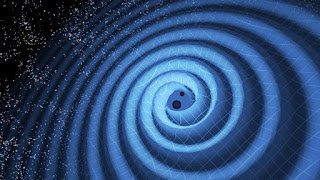Another view to
See the
Universe
Consider all of our knowledge about the Universe to this date has come to us through telescopes that measure light from the electromagnetic spectrum like radio waves, visible light, x-rays, or through detectors that measure subatomic particles. But all of these existing telescopes are completely blind to gravitational waves. This means that gravitational wave astronomyis an entirely NEW THING, a whole new way to observe the Universe. And it has already solved some important science questions: gravitational waves exist, black holes exist, and gravitational waves travel at the speed of light. Here’s how LIGO detectors work. There are two L shaped buildings, one in Hanford Washington, and another in Living stone Louisiana make up LIGO.
And there’s another detector called VIRGO which is in Italy near Pisa. Having several detectors on Earth means that scientists can verify a signal from space by seeing if it appears at all of the different detectors, and they are far apart because it means they can see roughly in what direction the wave is coming from by triangulating the signal. Even with these waves travelling at lights peed there is a delay of a few milliseconds between each of the detectors. Each of these L shaped buildings houses athing called a laser inter ferometer where a laser is produced, then split into two beams which each fly down a 4km long arm, and then they are reflected off a 40kg pure silicon test mass which is hung from the ceiling. It is hung from the ceiling on a series of pendulums to insulate it from any outside disturbances like trucks moving past, or people sneezing.
When you are trying to detect distances with a sensitivity less than the nucleus of an atom, getting rid of external noise is very important. Each arm bounces the laser back and forth 400 times to make the arm effectively 1600km long, and each time around the laser is boosted to make it stronger. Then after its journey the light is collected and recombined in such a way that if the arms are the same length the light from each arm cancels out producing no signal. But if a gravitational wave ripples past,it will stretch or contract each of the arms making the light from each arm arrive at the detector at slightly different times. That means that when they are recombined,they will no longer fully cancel out, and a signal will appear.
And this is exactly what happened on the 14th November 2015. It’s crazy to me to imagine that if they had turned on this detector just two days later, they would have completely missed the signal that had been travelling towards us for 1.3 billion years. This makes us wonder what other signals from deep space have we already missed, and what is still out there screaming towards us waiting to be discovered that we just don’t know about yet. In fact at the time that scientists made this video LIGO has detected another even stronger black hole collision, and we can expect a lot more in the coming months and years. It has already achieved many of its science goals, there are many more it is aiming for. For example it might be able to give us a more accurate measure of how fast the universe is expanding, and so how much dark energy there is.




















































